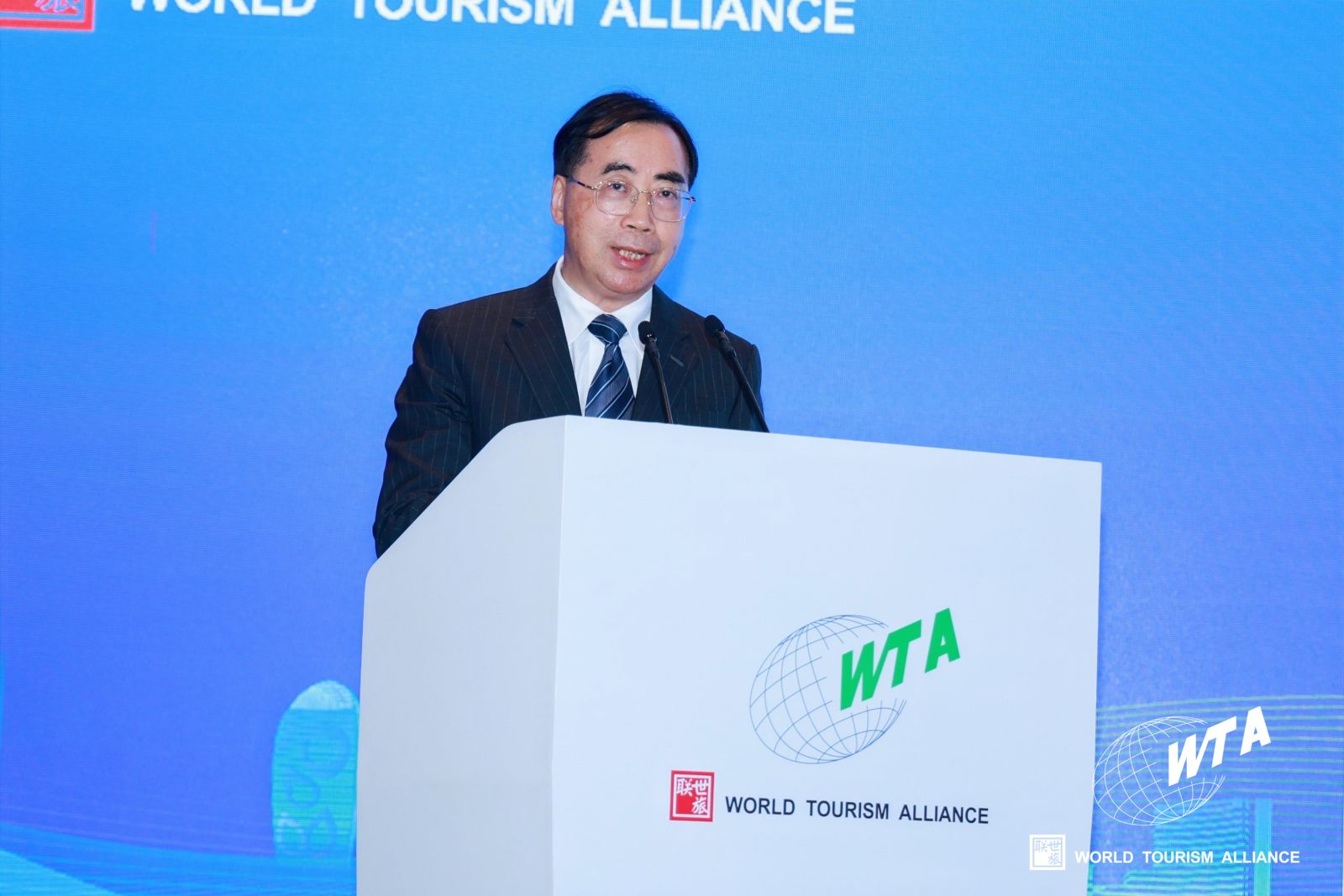2023-11-28

In a pivotal segment of the 2023 WTA • Xianghu Dialogue titled “Breaking the Mould&Establishing the New: Tourism Defines the Future”, Mr. WANG Jianping, Vice President of China Tourist Hotel Association and China Hospitality Association, President of Zhejiang Hotel Association and Narada Hotel, shared his insights on the “Facing the Future: Changes and Constants in the Hospitality Industry”.
Here are excerpts from his speech:
In an era marked by global turbulence, intensified major-power competition, macroeconomic downturns, and challenges in business, the hospitality industry faces a new set of changes and constants. These are evident in new markets, phenomena, business models, and products, and manifest on two main levels.
Firstly, change is inevitable, but what remains constant is the necessity of leveraging the fundamental principles of our industry.
In recent years, driven by shifts in the consumer market and technological advancements, substantial transformations have occurred in the consumption, operation, and management models of the hospitality industry. While the industry’s logic is evolving, certain fundamental principles remain unchanged:
The hospitality industry continues to face the challenges of physical space limitations and time constraints. Our ongoing challenge is to break through the bottlenecks of low spatial efficiency and outdated management models. The primary task for hotels is to increase the influx of demand with study on the properties of hotel products. We need to rethink the ecological structure of these products, transforming hotels into spending destinations and expanding the scope and depth of our spatial offerings to create a lifestyle-oriented hotel model. Additionally, we should leverage the brand appeal and traffic of hotel spaces, especially in high-end hotels, to create multi-scenario integrations. For instance, high-end restaurants can extend beyond dine-in and delivery services to become online culinary retail platforms. Lastly, hotels must adopt a business mindset to develop new customer segments, analyze their demographics and preferences, and create more value from effective space utilization by developing and optimizing products that cater to these new segments.
Hotels are vessels of multiple values, and maximizing intrinsic value is an unchanging objective. The initial value of the hospitality industry lies in the experience, as experience equates to profits in a sense. The key to success in hotels is maximizing the value of quality products and service experiences. The window value represents the image of the hotel and the characteristics of the industry. As mainstream consumption shifts, we must keep pace with the times, maximizing the window value of the era based on our industry status and hotel characteristics. The asset value reflects the intrinsic temporal value of the hotel and the potential for maximizing industry value. We need to explore spatial forms and products that can maximize the value of a hotel.
Enhancing management and operational efficiency is fundamental to business and a focal point in hotel management. We must find the optimal survival logic for hotels, focusing on matching users with suitable products, reinventing management processes through advanced technology, and identifying the best customer base.
Secondly, change is constant, but what remains unchanged is our progressive adaptation to change.
We must learn to coexist with change. This requires adjusting our perceptions, making different behavioral choices based on the underlying logic of the industry, and continually evolving and changing. The primary issues facing high-end hotels today are outdated products, low spatial efficiency, lagging management, and outdated marketing models. We need to find the right path for transforming the development of high-end hotels, increasing demand entry points in a changing market, maximizing the multiple values of hotels, and improving management efficiency.
We must find the principles of survival and growth, enabling the hospitality industry to establish firm roots in a constantly changing environment. This includes understanding shifts in consumer trends to align hospitality industry models with these changes; focusing on changes to find an accurate positioning in current and future markets; emphasizing product innovation to advance the functionalization of space, productization of functions, and marketization of products; and realizing intrinsic values by delving deeply into common aspects like experience and branding, while creating distinctive features in differentiated aspects.
Facing the future, we must grow amidst changes. Relative constancy is a form of beauty and temperament, contingent upon cost leadership, operational excellence, and customer proximity. This is the advantage many hotels continuously seek.